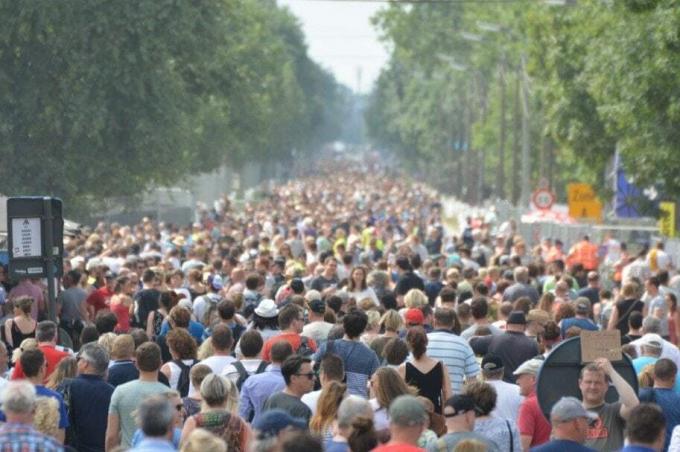In statistics, the cluster sampling is a probability sampling technique where researchers divide the population into multiple groups (clusters) for research. The researchers then select random groups using a simple random or systematic random sampling technique for data collection and analysis.
In other words, cluster sampling is a sampling method in which the entire study population is divided into externally homogeneous, but internally heterogeneous groups, called clusters. Essentially, each group is a mini representation of the entire population.
Advertisements
After identifying the groups, some are chosen by a simple random samplingwhile the others are not represented in a study. Also, after the selection of the groups, a researcher must choose the appropriate method to sample the items from each selected group.

Advertisements
In this article you will find:
Cluster sampling types
There are two types of cluster sampling, among them are:
- One-Stage Cluster Sampling: This type of cluster sampling deals with when a researcher works with the entire population of a group by selecting it randomly.
- Two-stage: On the other hand, the two-stage cluster sampling deals with when a researcher works with a certain quantity among the entire population for each group selected through systematic random sampling or simple.
In order to carry out cluster sampling, a series of steps must be carried out. Among them is:
Advertisements
- The sample: the target audience and its size will be decided.
- Develop and evaluate sampling frames: A sampling frame is created using an existing one or by creating a new one and then evaluate them based on coverage and grouping by making adjustments corresponding.
- Determine groups: the number of groups will be determined by including the same average number of members in each one. Each group must be different from each other.
- Select groups: groups will be chosen by applying a random selection.
- Create Subtypes: Two-stage and multi-stage subtypes will be divided according to the number of steps followed by researchers to form groups.
Advantages and disadvantages of cluster sampling
On the part of the advantages you have:
- Less resources, such as cost and time
- It is more feasible
- Convenient access
- More accurate data
- Ease of implementing sampling
As for the disadvantages, it has:
Advertisements
- High sampling error: In general, samples drawn using the pooling method are prone to higher sampling error than samples drawn using other sampling methods.
- Biased samples: The method is prone to bias. If the groups representing the entire population were formed under a biased opinion, the inferences about the entire population would also be biased.
Differences between cluster and stratified sampling
In stratified sampling, the population is divided into strata according to some variables that are considered related to the variables that interest us. A sample is then taken from each stratum.
This is intended to reduce sampling error because, if the strata are really related to the variables of interest, then each stratum is more homogeneous (it has less variation in the target variables).
Advertisements
In cluster sampling, the population is divided into groups and a sample is taken from them. But only some of the groups are taken. This tends to increase the sampling error because the groups tend to be similar.
If they were identical, it would not make sense to take more than one observation within the group because they would all be identical. The loss of precision is related to the variability within the groups that is only known after taking the sample.
On the surface, the grouping and stratifications are similar: in both, the population is divided into non-overlapping groups. But there the similarity ends. While stratified sampling can reduce sampling error, cluster sampling increases it (for the same sample size).
However, cluster sampling can allow get a larger sample for the same cost, and in terms of cost, we still hope to reduce the error. Ideally, the variation within strata should be as small as possible, while the variation within groups should be the best possible (but we cannot control the latter and we have to take it as this).
When to choose cluster sampling?
When you can't get complete information about the population, but you can get information about groups / clusters, this is when you should choose cluster sampling.
Assuming you've decided on cluster sampling, you may be subject to budget or time constraints. In that case, it might be more convenient to use cluster sampling by selecting people or items that are closer together, respond faster, or are cheaper to reach.
Cluster sampling is useful when: you do not have a list of elements from the population, but it is easy to obtain a list of groups. When the cost of obtaining observations increases as the distance separates the elements.


